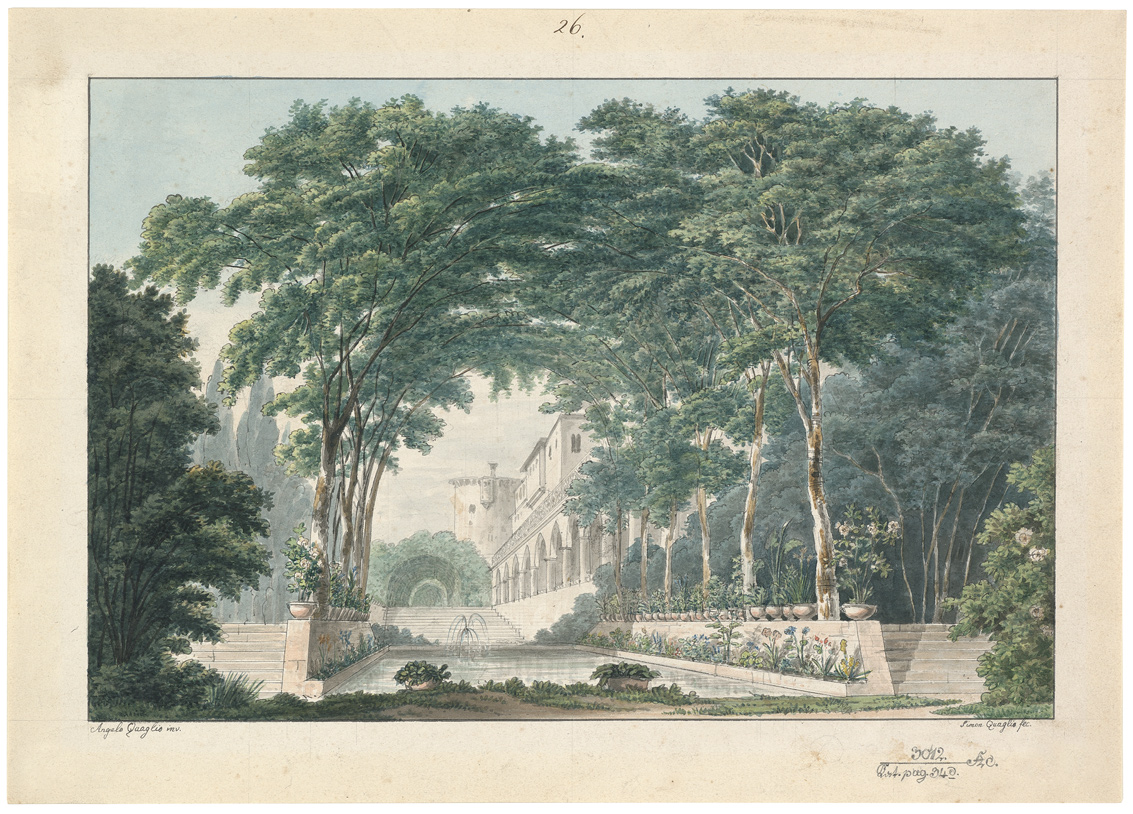Loading the page ...
Simon Quaglio
(1795–1878, Munich)
Southern Palace Garden with a Pergola and a Rose-arbour. Pen and black ink and watercolour. 24.6 x 34.5 cm. Verso inscribed in the artist’s own hand: “mit 8 Coulißen, und durchgebrochen, mit einem kleinen Prospeckt; Rosenlaube”.
The Quaglio family of artists hailed originally from Laino in Northern Italy but resided from the late 18th century onwards in Munich, where a large number of its members were active over several generations as theatrical and architectural painters. Simon Quaglio was taught by his father Joseph and his brother Angelo I. Following his brother’s death in 1815 he took over the latter’s position as court painter in Munich. Simon Quaglio’s stage decorations earned him considerable acclaim and admiration; he also excelled as an architectural painter and produced a slender lithographic oeuvre between 1814 and 1826.
A pergola rising up above a pond, which is rendered from a very foreshortened perspective, draws the beholder’s attention to another arboured walk and the silhouette of an Italian palazzo, the arcades of which are also depicted with a pronounced diagonal foreshortening. The effectively arranged scene indicates that the drawing was intended as the design for a stage set. The inscription in the artist’s own hand makes it clear that the composition is based on an idea developed by the artist’s elder brother Angelo Quaglio (1778–1815). The fresh green hues of the pleasure garden and the delicate shades of the architecture and the sky give the delightful scene great colouristic appeal. The deliberately romantic atmosphere also makes it readily apparent why Quaglio’s stage decorations were so popular with his contemporaries. From the collection of Johann Nepomuk Seiler (Lugt 3976).
